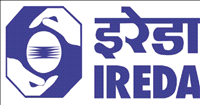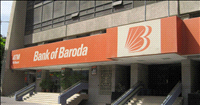Java - a ''disruptive technology''?
By Pradeep Ananth | 20 Aug 1999
Technology? - all right, I know what it is! What in the world is a 'disruptive technology'?
A disruptive technology is something that is powerful enough to sound the death-knell of a current technology that has seemingly ensconced itself as the definitive technology for certain applications. Now the way in which disruptive technologies operate is that they don't compete with or try to overshadow existing technologies in the mainstream world right away.
Flanking attack
Disruptive technologies begin by starting to make an influence in application domains, which are far removed from the ones in which currently established technologies are being applied. Gradually they gain in strength until they are powerful enough to get into the mainstream and take over from the currently established technologies, thus causing their doom, and along with that, the doom of all the current players in that domain.
A classic example of a disruptive technology is that of transistor technology. When the transistor was invented, it was not used right away in telecommunications and large computing systems, considered the mainstream as far as the electronics industry is concerned. Instead, it was first used in audio electronics.
Sony started using transistors in its miniature audio equipment. Later this component was used in televisions and other small electronic appliances. All the while the folks out in the mainstream were doing great business with their vacuum tube-powered machines and were raking in the shekels with consummate ease ( la Microsoft).
But suddenly the transistor technology had gained enough momentum in the sidestream, and it was now time to move into the mainstream. When it did so eventually, it took the mainstream by storm. Vacuum tubes were wiped out of the market without a trace and even players like Digital Equipment Corp. couldn't sustain the might of the new 'disruptive technology', that the transistor represented.
TAKING ON MICROSOFT
Today we are confronted with a similar situation in the computing industry. Microsoft, with its Windows-based technologies, is the undisputed king of the Software Empire. Today most mainstream software applications are written in C++, Visual Basic, and based on the Windows architecture. Java was invented mainly as a platform-independent technology that would make the operating system insignificant.
Java started of as an 'Internet based' technology. In other words, most applications written in Java were targeted for use on the Internet. As Sun Microsystems and its allies keep churning out more and more APIs, or application program interfaces, for Java, thus enhancing its capabilities, Java is slowly gaining power in its own domain, where it has carved a niche for itself.
Thus one can see the patterns of a disruptive technology emerging in Java. Will it prove to be one?! Will Big Bill be brought down? At least Prof. Christensen thinks so. He predicts that Java will usurp the throne from Microsoft in the next five to seven years as the definitive technology for software applications. Makes for some interesting observations over the next few years for sure!
ABOUT THE AUTHOR
Pradeep Ananth is operations executive in the US for Angler Web Services, an Indian start-up specialising in Internet business solutions. He has been associated with companies like AT&T and IBM in the past.


















.jpg)










